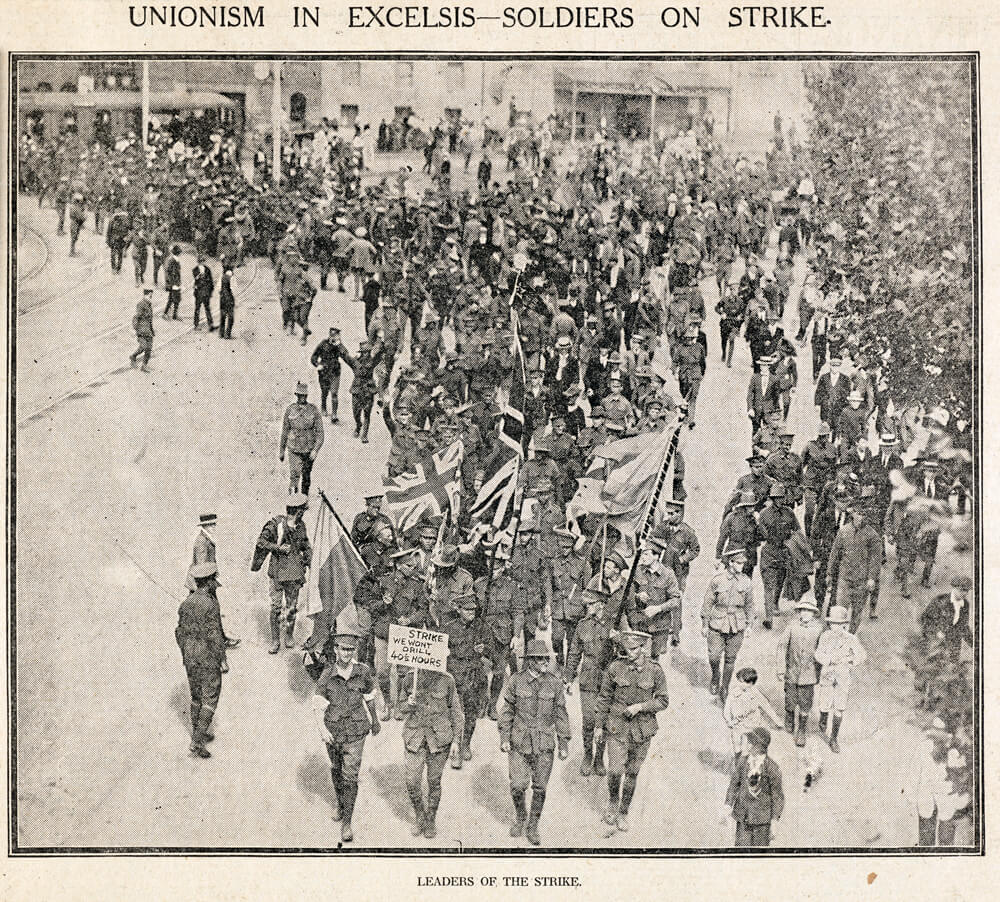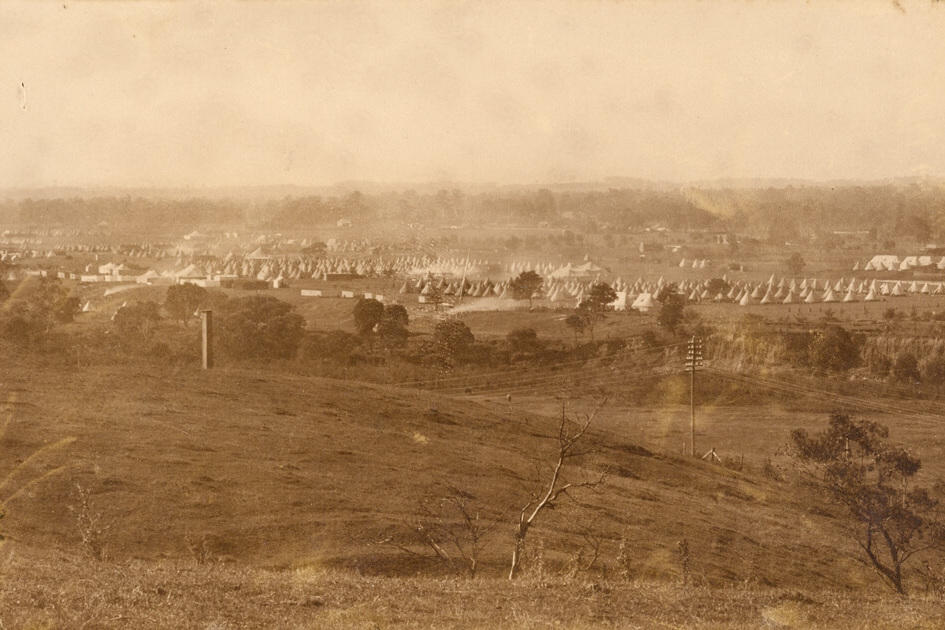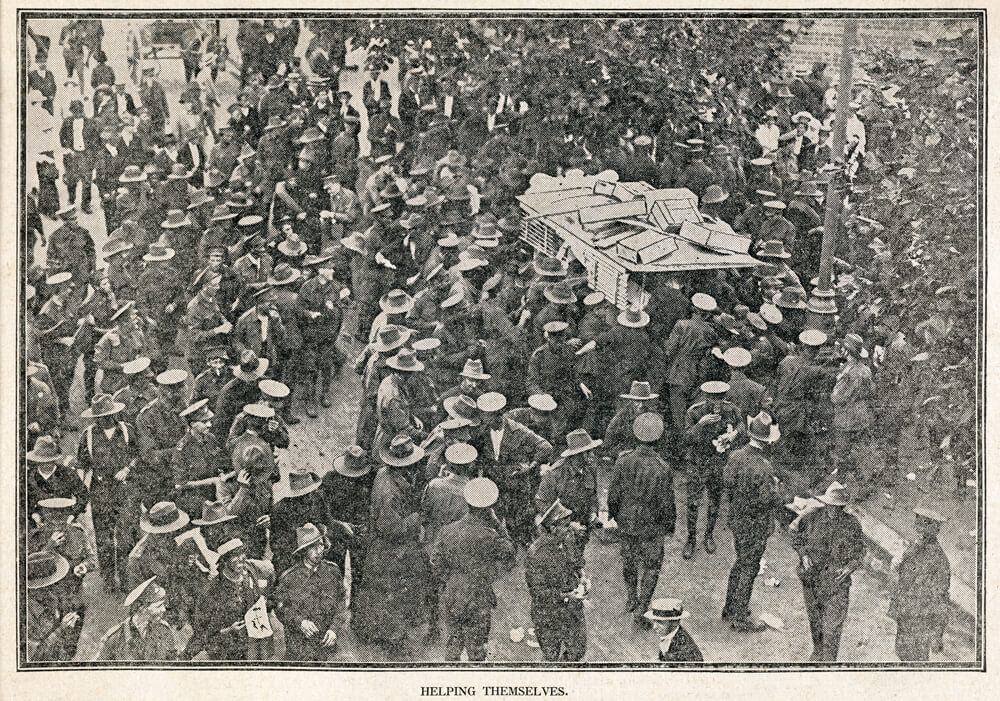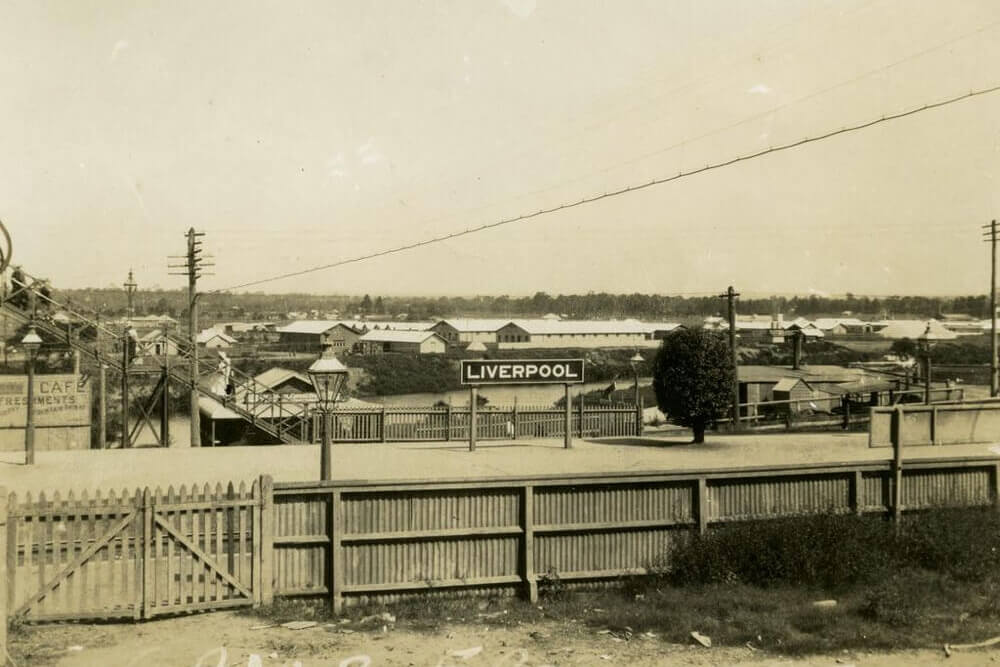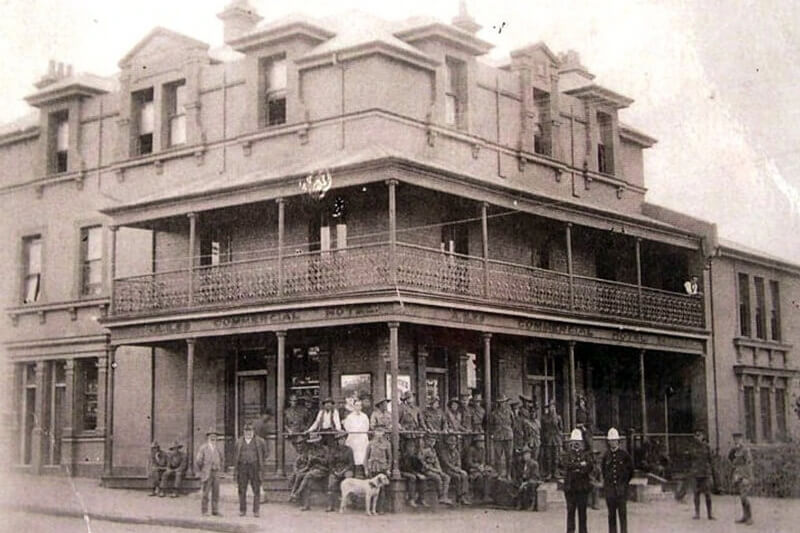Location
Liverpool Station, Bigge St, Liverpool NSW 2170
Liverpool is on the land of the Cabrogal Clan of the Dharug nation.
Accessibility
Wheelchair accessible
About Soldiers’ Riots
On Valentine’s Day 1916, soldiers from a number of training camps in the Liverpool area rioted in protest at their conditions. After months of unrest, tempers boiled over as some 3,000 soldiers decided to strike. After fuelling their anger in local pubs, they swarmed onto trains at Liverpool Station, bound for Sydney’s CBD.
Although short-lived, the riots caused widespread damage and contributed to the death of a recruit and the injury of others. The incident also led to the introduction of 6 pm closing in New South Wales hotels, a law which lasted for almost 40 years.
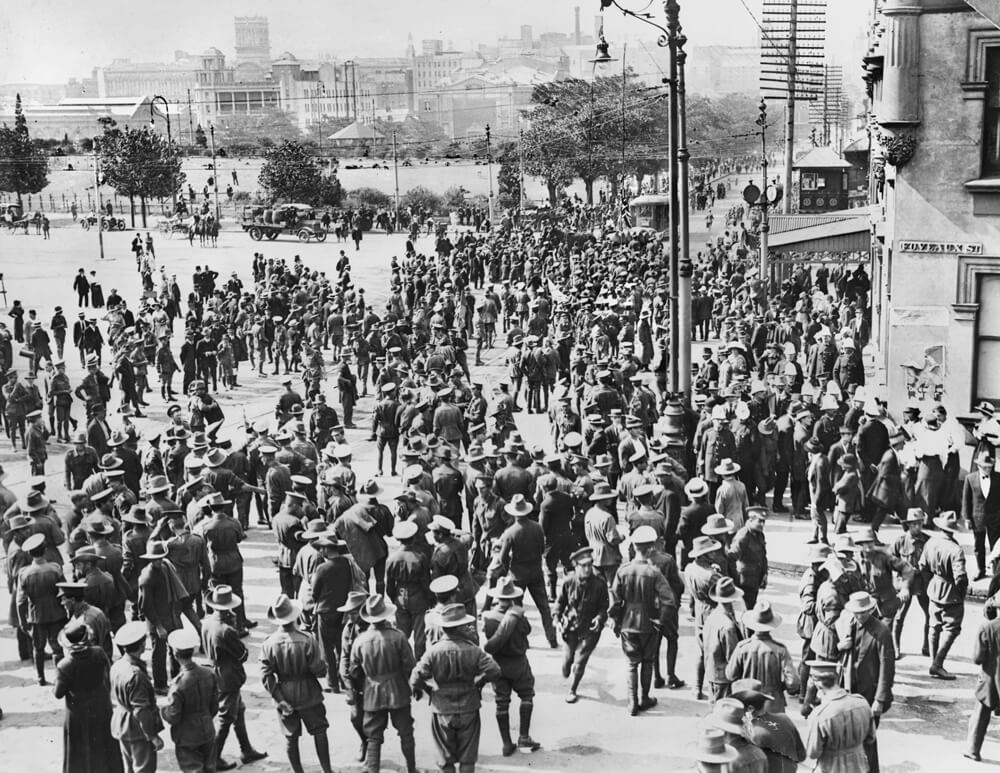
Soldiers on strike outside Toohey’s Brewery
Growing tensions
Amid great excitement at the outset of the First World War, the Australian Imperial Force expanded its training bases at Liverpool and Casula in south-west Sydney to cater for a large number of new recruits.
However, conditions in the overcrowded camps were harsh and uncomfortable. Recruits were especially unhappy about the lack of ‘wet canteens’ that would serve alcohol. It was also hard to obtain leave passes and catch trains from Liverpool Station. At Casula, the recruits complained about excessive discipline and overwork.
In July 1915, a royal commission inquiry recommended major administrative changes and facility improvements.
Despite these recommendations, tensions remained high. In one confrontation, about 1,000 troops requested and were denied ‘patriotic’ (free) drinks at several hotels. In response, soldiers threw bottles and stones, breaking windows.
The last straw for many came on Valentine’s Day 1916, after troops at Casula were told their training would be increased from 35 to more than 40 hours a week.
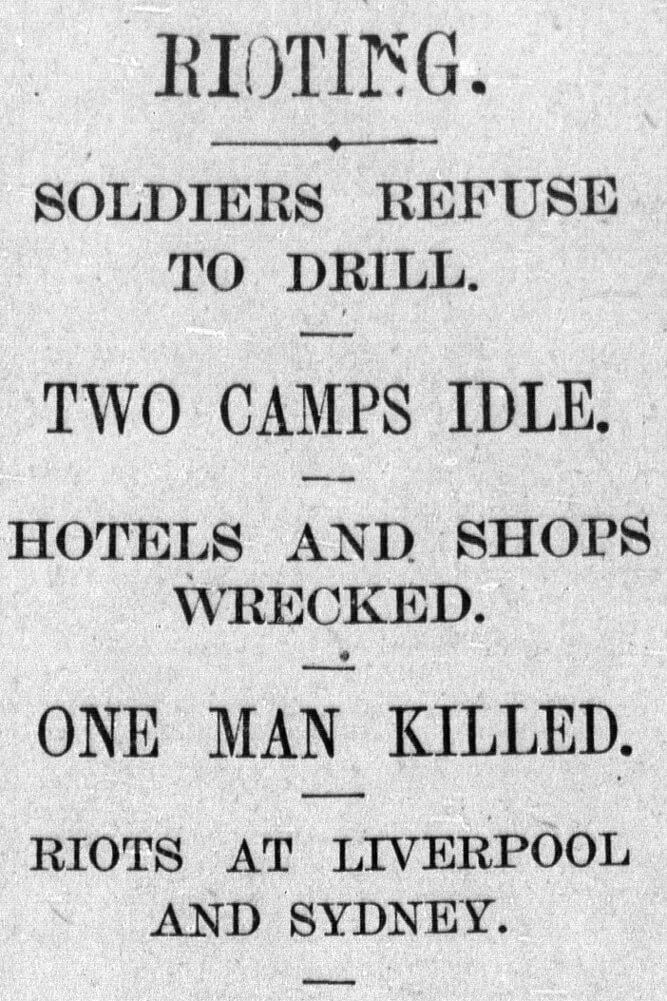
The riot was reported in the Sydney Morning Herald the next day
Trouble on Sydney’s streets
By late morning on 14 February, around 3,000 men from the 2 camps marched into Liverpool, where they ransacked local hotels, stealing beer and spirits.
The men then joined forces at Liverpool Railway Station. Refusing to pay their fare, thousands of soldiers swarmed onto the trains heading into the centre of Sydney where they began marching up George Street to continue the protest. However, discipline soon broke down and the soldiers started raiding street stalls, smashing up hotels and seizing passing vehicles.
As each train from Liverpool arrived, more drunken troops swarmed into different parts of the city, causing havoc and damage.
Crowds of onlookers initially hampered authorities’ efforts to control rioters, but by 5 pm police had herded most of the soldiers back to Central Station for the journey back to camp.
Protestors who remained behind threw missiles and aimed a fire hose at police lines. Shots were fired by armed guards (and purportedly one of the soldiers), killing a recruit and wounding several others, including a civilian.
The aftermath
Following the riot, the number of recruits being trained at the Liverpool camp was reduced dramatically. The camp at Casula was closed entirely. Some rioters faced a court martial or civil charges; however, most were still sent to the frontline.
An unexpected result of the riot was that it helped sway the outcome of the 1916 referendum to determine the closing time of licensed premises in New South Wales. The result was a ‘yes’ vote for a 6 pm close.
This change led to the notorious ‘6 o’clock swill’ – the last-minute rush to buy and consume drinks after work finished for the day.
The measure remained in place until 1955, when closing time was extended to 10 pm.
References and further reading
- Daily Telegraph (4 January 2016) The stories that shook Sydney in 1916: six o’clock swill, the Liverpool riot and the thorny issue of conscription, Daily Telegraph, accessed 2 July 2025.
- NSW Anzac Centenary (n.d.) Liverpool Riot 1916, State Archives and Records website, accessed 2 July 2025.
- Radford N (2016) The Soldiers' Riot of 1916, Dictionary of Sydney, State Library of New South Wales website, accessed 2 July 2025.
- Reinecke C (1 June 2010) The other charge of the Light Brigade, Griffith Review, accessed 2 July 2025.
